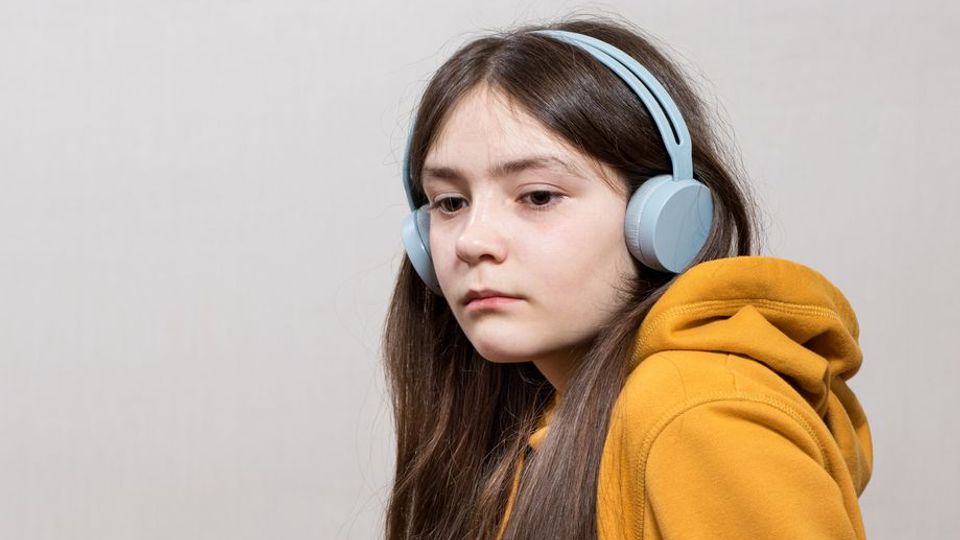Complementary and alternative treatments for autism are widely used, often seen as safe and natural options for improving quality of life. In fact, research suggests that up to 90% of autistic people try these interventions at some point. But do they work – and are they safe?
A new umbrella review published in Nature Human Behaviour challenges common assumptions: not only is there no strong evidence that these treatments improve core autism symptoms, but safety is rarely assessed. The study provides the most comprehensive analysis to date, examining 248 meta-analyses that encompass 200 clinical trials and over 10,000 participants.
To understand what this means for autistic individuals, families and clinicians, Technology Networks spoke with the study’s lead researcher, Dr. Corentin J. Gosling, an associate professor at Paris Nanterre University. Gosling explained why they undertook this work, what they found and how a new online database tool could help guide evidence-based decisions.
Rhianna-lily Smith (RLS):
Editorial Assistant
Technology Networks
Rhianna-lily is an Editorial Assistant at Technology Networks. She holds an honors degree in biomedicine from the University of East Anglia and a masters degree in microbiology. Before joining Technology Networks she researched maternal health and the microbiome.
Why did your team decide to conduct this umbrella review on complementary, alternative and integrative medicine (CAIM) for autism, and why is this issue so important now?
Associate Professor
Paris Nanterre University
Dr. Corentin J. Gosling is a clinical neuropsychologist at Robert Debré Hospital (Paris, France) and an associate professor of neuropsychology at Université Paris Nanterre.
RLS:
Editorial Assistant
Technology Networks
Rhianna-lily is an Editorial Assistant at Technology Networks. She holds an honors degree in biomedicine from the University of East Anglia and a masters degree in microbiology. Before joining Technology Networks she researched maternal health and the microbiome.
The term “CAIM” covers a lot of ground. Can you briefly explain what kinds of treatments fall under this umbrella?
Associate Professor
Paris Nanterre University
Dr. Corentin J. Gosling is a clinical neuropsychologist at Robert Debré Hospital (Paris, France) and an associate professor of neuropsychology at Université Paris Nanterre.
Our study defined CAIM based on three criteria: whether an intervention originates outside of Western medicine, whether it is considered a standard treatment for a specific condition and whether it is delivered by practitioners outside of conventional medical institutions. This covers a wide variety of approaches.
Our review specifically investigated 19 different CAIMs, including “mind-body medicine” (such as sensory integration therapy), “natural product-based therapies” (such as special diets or vitamin supplementation), “manipulative and body-based practices” (such as physical activity interventions) and “energy medicine interventions” (such as acupuncture).
Editorial Assistant
Technology Networks
Rhianna-lily is an Editorial Assistant at Technology Networks. She holds an honors degree in biomedicine from the University of East Anglia and a masters degree in microbiology. Before joining Technology Networks she researched maternal health and the microbiome.
You found no high-quality evidence supporting the efficacy of any CAIM for core autism symptoms. Were there any interventions that looked promising despite the low evidence quality?
CJG:
Associate Professor
Paris Nanterre University
Dr. Corentin J. Gosling is a clinical neuropsychologist at Robert Debré Hospital (Paris, France) and an associate professor of neuropsychology at Université Paris Nanterre.
We deliberately avoid highlighting any specific intervention as particularly “promising.” Even when some studies suggest larger effect sizes, the accuracy of these estimates is often highly uncertain.
Instead, we encourage people to explore all available options while being aware of both the strengths and the limitations of the evidence for each intervention.
Our goal is to support careful, balanced and informed decision-making rather than steering individuals toward particular choices.
Editorial Assistant
Technology Networks
Rhianna-lily is an Editorial Assistant at Technology Networks. She holds an honors degree in biomedicine from the University of East Anglia and a masters degree in microbiology. Before joining Technology Networks she researched maternal health and the microbiome.
Which interventions had the most research behind them, and which ones were surprisingly under-researched despite being popular?
CJG:
Associate Professor
Paris Nanterre University
Dr. Corentin J. Gosling is a clinical neuropsychologist at Robert Debré Hospital (Paris, France) and an associate professor of neuropsychology at Université Paris Nanterre.
Oxytocin was relatively well-studied across age groups, representing the intervention with the highest quality of evidence in our review, even though this evidence did not support a large efficacy for core autism symptoms.
Conversely, many popular interventions, such as special diets or animal-assisted therapy, had rarely been studied.
Editorial Assistant
Technology Networks
Rhianna-lily is an Editorial Assistant at Technology Networks. She holds an honors degree in biomedicine from the University of East Anglia and a masters degree in microbiology. Before joining Technology Networks she researched maternal health and the microbiome.
What were the most common weaknesses that you found in the methods of these studies, and what needs to change in future research?
CJG:
Associate Professor
Paris Nanterre University
Dr. Corentin J. Gosling is a clinical neuropsychologist at Robert Debré Hospital (Paris, France) and an associate professor of neuropsychology at Université Paris Nanterre.
The most common weaknesses were imprecision – meaning a low number of participants leading to imprecise estimates - and a high risk of bias from methodological flaws in the original trials.
A crucial and concerning finding was that safety was rarely assessed, with fewer than half of the interventions being evaluated for adverse effects.
To address this, future research should be carefully designed, using appropriate outcome measures to minimize bias. Such studies must also include comprehensive safety monitoring to provide a clearer understanding of the potential benefits and risks of CAIM for individuals with autism.
Editorial Assistant
Technology Networks
Rhianna-lily is an Editorial Assistant at Technology Networks. She holds an honors degree in biomedicine from the University of East Anglia and a masters degree in microbiology. Before joining Technology Networks she researched maternal health and the microbiome.
Given what you’ve found, what is the single most important message for people considering these treatments?
CJG:
Associate Professor
Paris Nanterre University
Dr. Corentin J. Gosling is a clinical neuropsychologist at Robert Debré Hospital (Paris, France) and an associate professor of neuropsychology at Université Paris Nanterre.
The single most important message is that any decision should be a shared and informed one. Our review found that the evidence for most CAIMs is highly uncertain, particularly when it comes to safety. This means the potential benefits are often unclear, and the potential risks are largely unknown. We encourage autistic people and their families to weigh the potential benefits against these significant uncertainties and to discuss their values and preferences with a trusted healthcare professional to make a choice that is adapted to them.
RLS:
Editorial Assistant
Technology Networks
Rhianna-lily is an Editorial Assistant at Technology Networks. She holds an honors degree in biomedicine from the University of East Anglia and a masters degree in microbiology. Before joining Technology Networks she researched maternal health and the microbiome.
Your team has already developed an interactive platform to facilitate access to and interpretation of these study results. What is next for your research?
CJG:
Associate Professor
Paris Nanterre University
Dr. Corentin J. Gosling is a clinical neuropsychologist at Robert Debré Hospital (Paris, France) and an associate professor of neuropsychology at Université Paris Nanterre.
The next step is to complete the evidence synthesis on pharmacological interventions, ensuring that the platform provides a comprehensive overview of all intervention types – psychosocial, CAIM and pharmacological. Building on this foundation, a PhD student funded by the Agence Nationale de la Recherche (France) will join the project in September to co-design the platform with diverse stakeholders and empirically evaluate its practicality, relevance and responsiveness to their needs.




